Korean Sesame Broccoli Salad
Vibrant green, fresh broccoli florets with a simple sesame dressing is the perfect Korean side dish for any Asian main. And it only takes a few minutes to get this Korean sesame broccoli salad on the table.
This simple Korean broccoli recipe is a great vegetable side dish for any Asian main meal. The classic Korean side dish gets a big flavour boost from the easy sesame dressing.
Best of all? This easy Korean broccoli banchan only takes a few minutes to put together. And it’s naturally vegan and gluten-free.
I include instructions for blanching broccoli in the recipe card, but you can also steam broccoli. Just don’t overcook it. The broccoli should retain a fresh crunch and bright green hue.
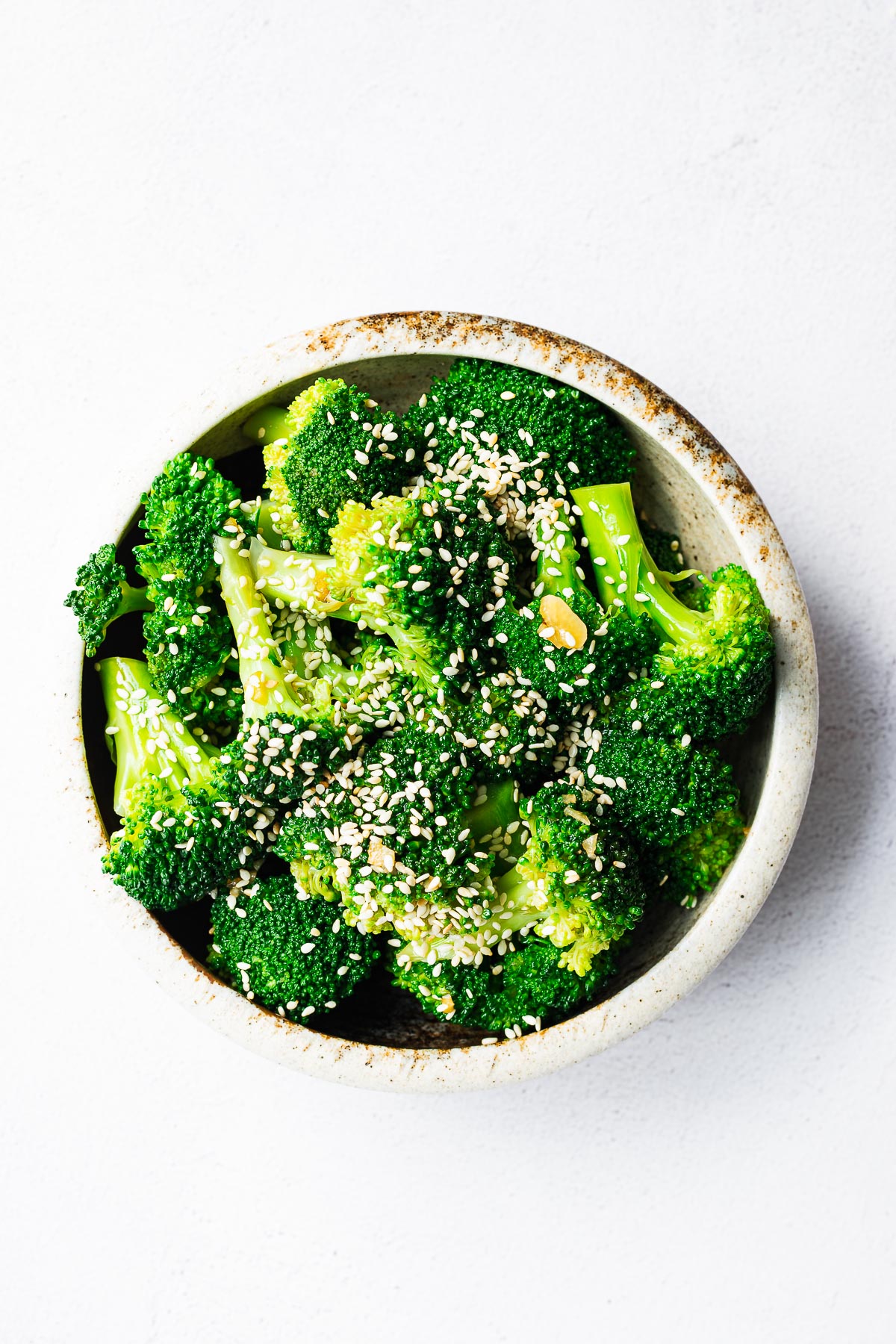
Korean broccoli ingredients and substitutions
This easy recipe relies on the crunchiness of fresh broccoli. The fresh broccoli florets turn into delicious sesame broccoli bites with very few ingredients. And, as always, the simpler the dish, the more important the quality of the ingredients.
Broccoli
Start with a fresh head of raw broccoli. The recipe requires roughly 1 pound (450 grams) of broccoli. This is one large head or two small ones.
Slice it into small florets. Broccoli stems have a tough outer layer. Carefully trim this layer from the remaining stalk and slice the trimmed stem into ½ inch (1 cm) thick slices.
To save time, you can buy precut broccoli florets. However, I don’t recommend using frozen broccoli in this case. The freshness of crisp green broccoli florets is essential here.
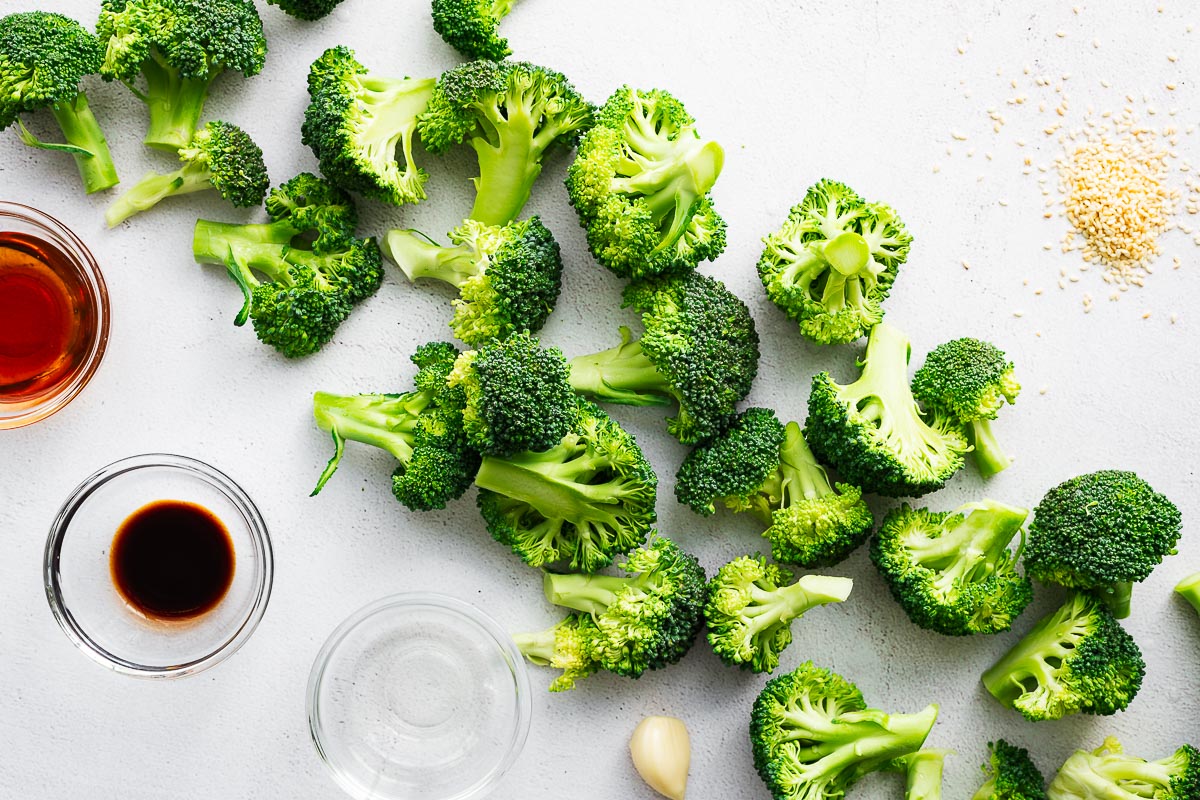
Sesame dressing for broccoli
Simple steamed broccoli gets a serious flavour boost thanks to the sesame dressing. You can also add this dressing to any green veggie for an instantly delicious side dish – it works great with roasted Brussels sprouts or sautéed bok choy.
Dressing ingredients:
- Toasted sesame oil: Make sure your sesame oil is toasted. It adds a lovely nutty flavour to the Korean broccoli side dish. You can substitute half of the sesame oil for olive oil if the sesame flavour is too strong for you.
- Garlic: Fresh garlic cloves add a tasty savoury punch.
- Soy sauce: Use regular or light soy sauce, not dark soy sauce. If you need this vegetable side dish to be gluten-free, you can use tamari or coconut aminos. Or omit the soy sauce in favour of kosher salt.
- Rice vinegar: This is not an addition you always find in Korean-style broccoli salads, but I love the freshness that a splash of vinegar brings. Rice vinegar (or rice wine vinegar) works best, but you can also use seasoned rice vinegar or apple cider vinegar.
- Sesame seeds: If you’re in a rush, you can skip the toasting of the sesame seeds, but it adds a depth of flavour. I often oven-roast a large batch of sesame seeds and then store them in an airtight container to use as needed. It keeps well for months.
- Gochugaru: These Korean red pepper flakes add a welcome spicy kick to the salad. But it is an optional addition (see the best gochugaru substitutes for alternative chilli flakes). I only add the extra spice if I am not serving the broccoli dish with a spicy main. You can also add a tablespoon of gochujang for a delicious gochujang sesame broccoli salad.
These ingredients don’t stray far from authentic Korean broccoli. But, for a more generic Asian broccoli salad, you can also add grated ginger, black pepper, chopped scallions and a splash of fish sauce.
Learn more about Korean ingredients and how to substitute them in Korean cooking:
How to make Korean broccoli
This sesame broccoli dish is a popular Korean side dish or broccoli banchan. Banchan refers to the many Korean side dishes served alongside most Korean meals.
They may seem like a side deal at first glance, but they pack a mean flavour punch and are an essential part of Korean cuisine.
Step 1: Cook the broccoli
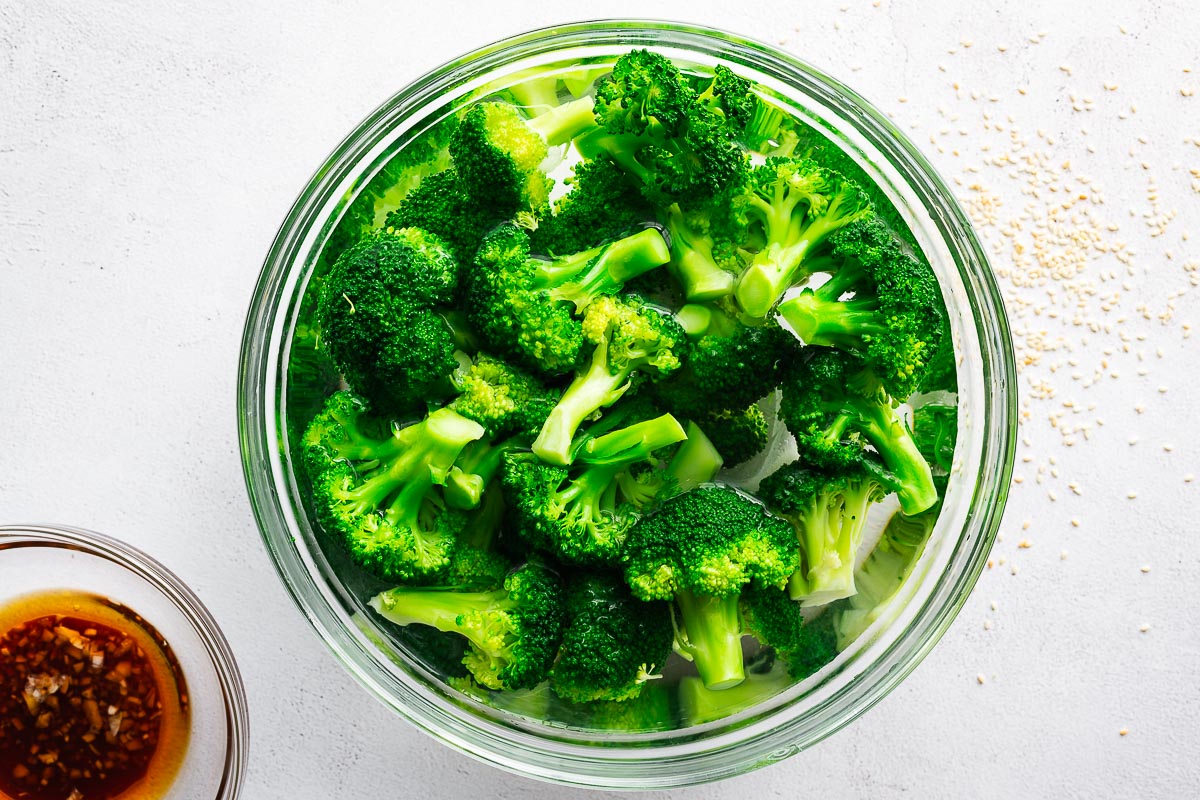
Bring a large pot of water to a boil over high heat and add a teaspoon of salt.
The water should be boiling rapidly before you add the broccoli. And be sure to use enough water to submerge the broccoli florets.
Add the broccoli florets to the boiling water and cook for no more than two minutes. You want it to retain a slight crunch and not turn into boiled broccoli mush.
Drain the broccoli.
Instead of boiling, you can also briefly steam the broccoli. Learn how to steam broccoli in an Instant Pot.
Step 2: Transfer broccoli to an ice bath
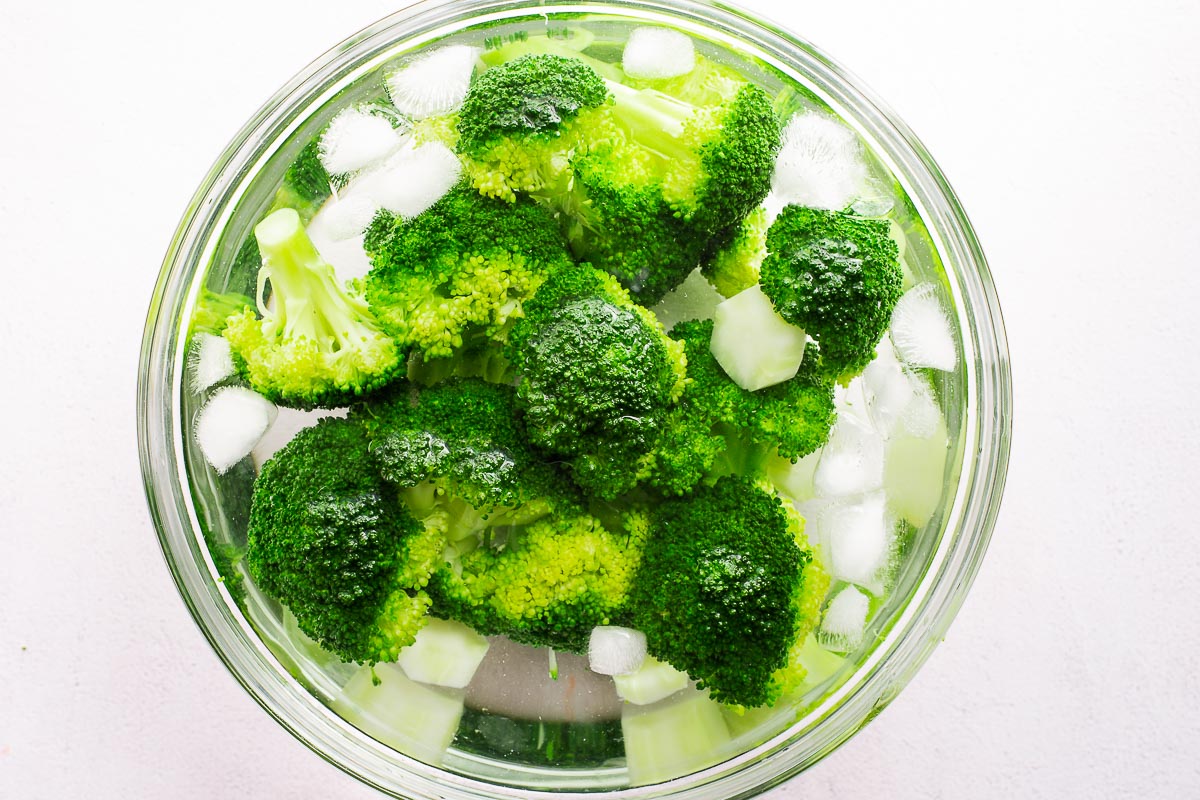
Once cooked and drained, immediately place the broccoli florets in an ice bath. This stops the cooking process and renders vibrantly green and crunchy broccoli florets.
To create an ice bath, fill a large bowl with ice blocks and cold water. To get ahead, do this while you wait for your water to reach a boil in step one.
Step 3: Drain the broccoli
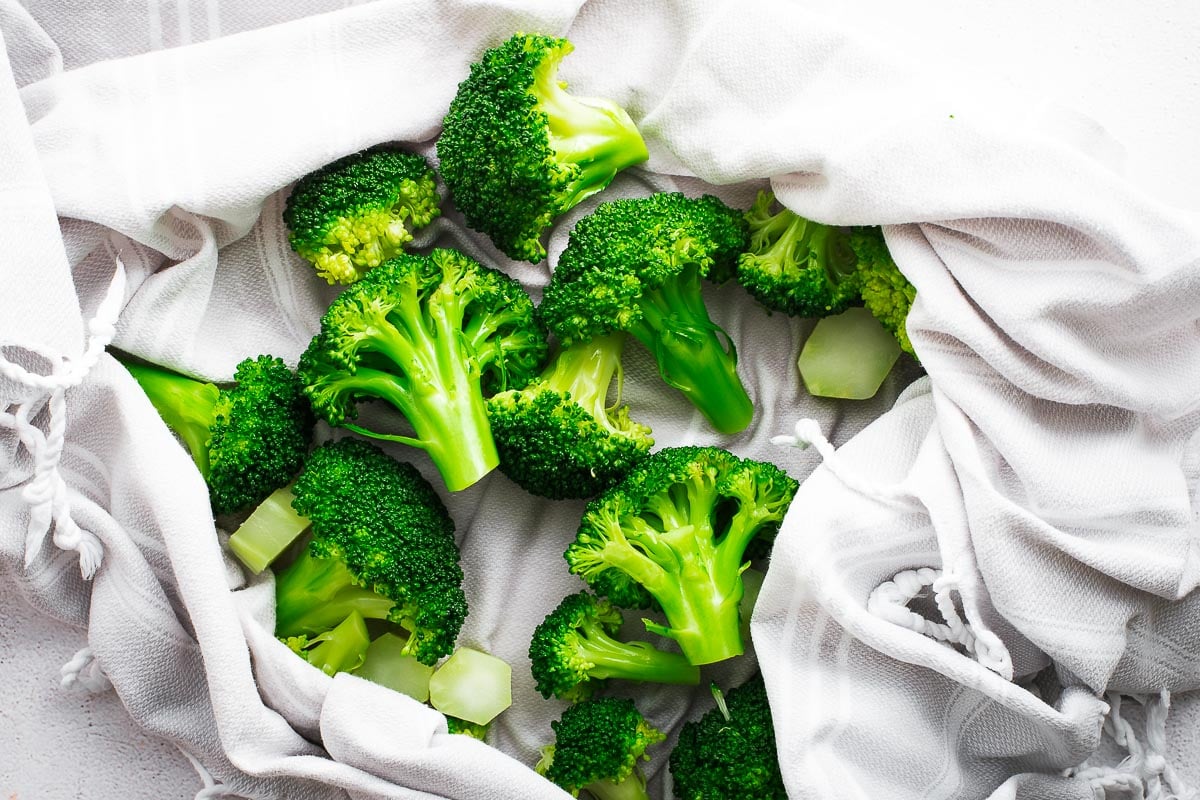
Drain the cooled broccoli and dry very well.
You can use a clean tea towel or paper towel to pat dry the cooked florets. No one wants watery salad.
Step 4: Add the dressing
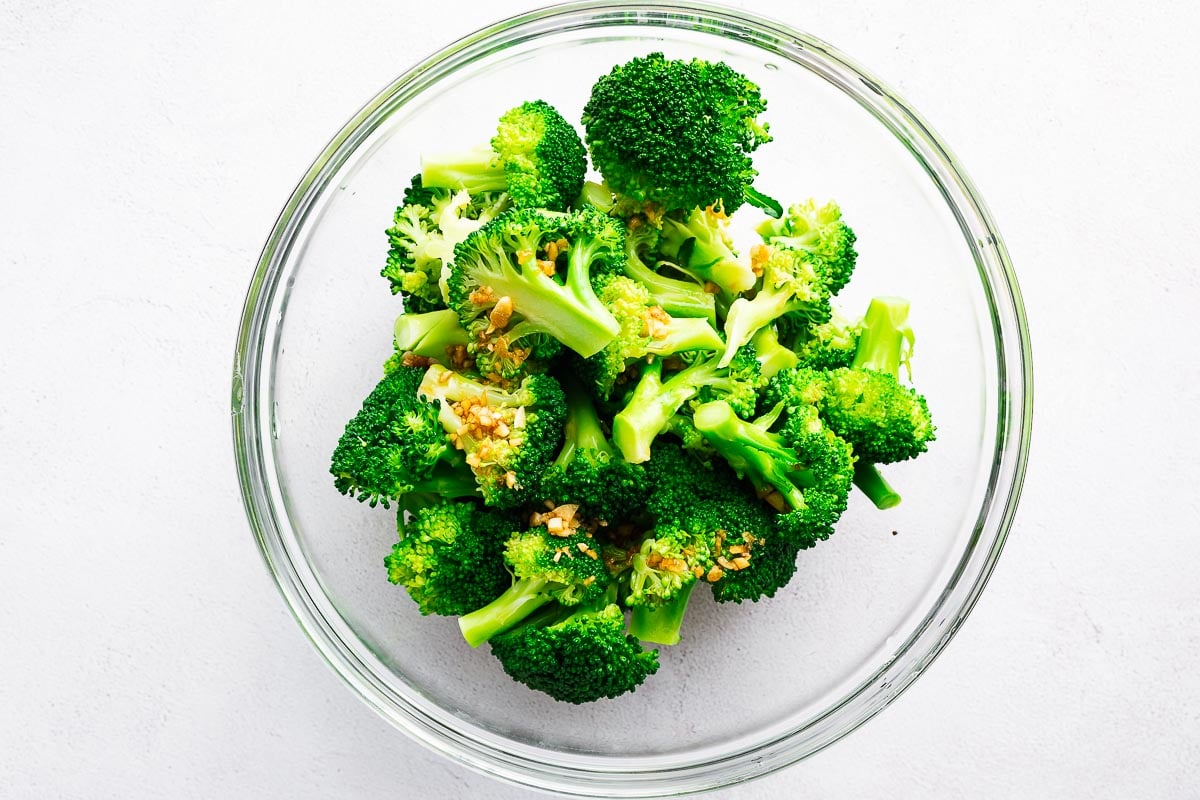
Place three tablespoons of toasted sesame oil, the minced garlic clove, two teaspoons of soy sauce, and a teaspoon of rice vinegar in a small bowl and stir.
Add a teaspoon of gochugaru (or another type of chilli flake) if you want a spicy sesame broccoli side. I only do this if I’m not serving it alongside a spicy main dish.
Mix the cooked broccoli with the sesame dressing and spoon over the toasted sesame seeds.
How to store Korean broccoli salad
This salad is best while fresh. You can rest the salad for a few hours to let the flavours mingle. But the salad is best prepared on the day you want to serve it.
If you have leftover salad, store it in an airtight container and refrigerate it for three to four days. The broccoli will lose its vibrant colour and crunchy texture. But the sesame dressing will have more time to infuse the broccoli florets. You win some, you lose some, hey?
I love to have leftover sesame broccoli to add to egg-fried rice, fried noodles and bibimbap bowls.
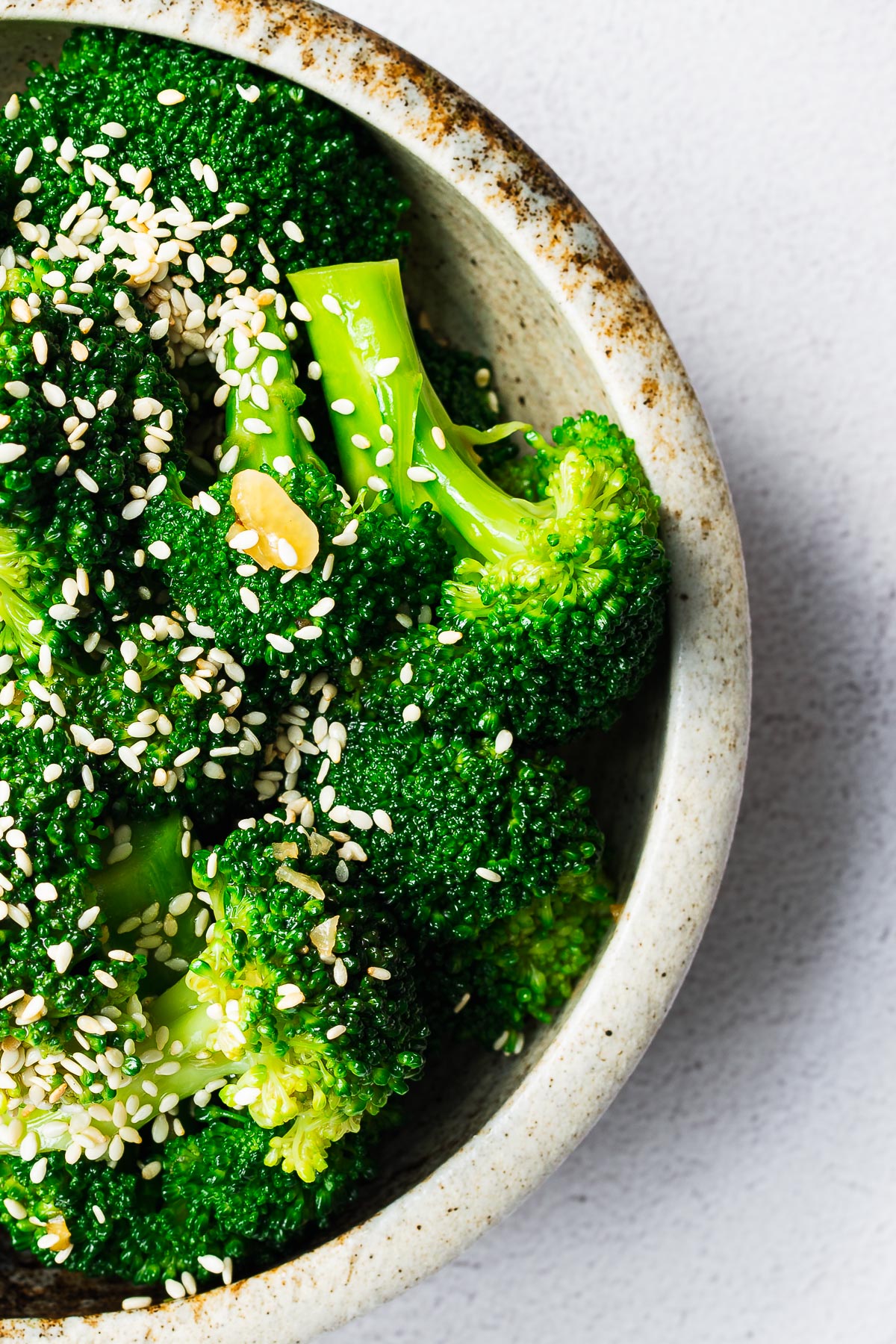
What to serve with Korean broccoli?
While this recipe is a Korean-style banchan recipe, you can serve it alongside any meal that requires some freshness.
For a vegan Korean dinner spread, serve it with more Korean recipes:
- Gochujang tofu (spicy Korean braised tofu),
- spicy Korean cucumber salad (oi muchim),
- soy-braised baby potatoes (gamja jorim),
- green onion salad (pa muchim),
- kimchi, and
- Korean fried rice with gochujang or short-grain white rice (try this easy stovetop short-grain rice recipe or this Instant Pot sushi rice recipe).
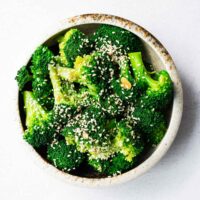
Equipment
- Large saucepan – for boiling broccoli.
- Large mixing bowl – for the ice bath.
Ingredients
- 1 pound fresh broccoli *
- 1 teaspoon salt for blanching
Sesame Dressing
- 3 tablespoons toasted sesame oil
- 2 teaspoon soy sauce
- 1 teaspoon rice vinegar
- 1 garlic clove, minced
- ½ teaspoon salt, and more to taste
- 1 teaspoon gochugaru or red pepper flakes (optional)
To Serve
- 1 tablespoon toasted sesame seeds
Instructions
- If you have whole broccoli heads, slice the individual florets from the broccoli crown. Remove the tough outer skin of the remaining broccoli stalk with a sharp knife. Cut the peeled broccoli stalks into ½ inch (1 cm) slices.
- Bring a large pot of water to a boil over high heat. Use enough water to submerge the broccoli florets. Add a teaspoon of salt. While you wait for the water to reach a rolling boil, fill a large bowl with cold water and ice.
- Add the broccoli florets to the boiling water and cook for one to two minutes. Drain the broccoli and immediately place the florets in the bowl of ice water to stop the cooking process.
- In a small bowl, combine the sesame dressing ingredients. Mix the cooled broccoli with the dressing. Taste and add more salt as needed.
- Transfer the salad to a serving bowl and sprinkle with a tablespoon of the sesame seeds. Serve the salad cold or at room temperature.
Notes
- Use a head of broccoli, or buy raw broccoli florets.
- To toast sesame seeds, add them to a hot, dry skillet and cook for a few minutes. Or roast a large batch of sesame seeds in the oven.

Love this! So simple but so flavourful!
Thank you, Sarah! It’s my favourite way to eat broccoli at the moment!